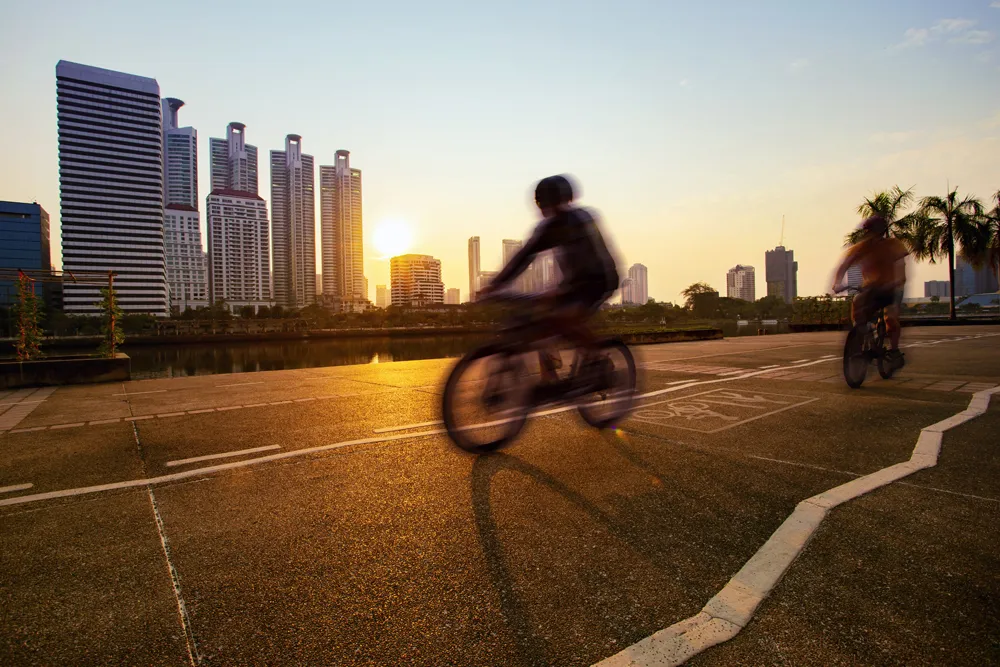
Clearer understanding of the economic value of accessible transport is essential if we are to speed up the current slow deployment levels, according to the Paris-based
The event brought together experts in both cost-benefit analysis and transport in the same room. ITF economist Lorenzo Casullo told
As a global intergovernmental organisation with 57 member states, the ITF is a think-tank on policy covering all transport modes and focuses on economic growth, environmental sustainability and social inclusion. The round table focused on walking, urban public transport, rail and air transport rather than on private vehicle transport by road, using bicycles, cars or taxis.
Many member countries of the ITF, and of the Organisation for Economic Cooperation and Development (
The two main barriers are the competing demands for investment in a context of budgetary restraints for transport authorities and operators, and ‘an unclear understanding of the economic benefits of improved accessibility’ to justify such investment.
“While costs are usually known, benefits are not clearly defined, quantified, documented, or attributed to transport”, says the ITF’s December 2016 report on the event. One participant, Bridget Burdett of New Zealand transport planning consultancy TDG, told delegates: “There is no economics of inclusion in transport.
“We rely on design standards and guidelines. We do not value participation in dollars like we value human life.” She called for estimation of the cost of trips not made.
Coincidentally, an EU study of accessible tourism, which the IFT cites as a model for outlining its own research needs, found that if European journeys and destinations were made fully accessible, demand for tourism services by mobility-impaired passengers could increase by more than 40%.
Quality of web- and smartphone-accessed information can be another impediment to accessible travel planning. The ITF wants to see wider take-up of guidelines developed by the World Wide Web Consortium’s Web Accessibility Initiative (WAI) on, for example, problem-free text enlargement. In a new, 2016 update, these also stress the need for vulnerable users to be able to exert control over moving, flashing, or blinking content. This can cause problems for travellers with attention deficit or visual processing disorders, and put epileptics at risk of seizures.
On fare payment, introduction of accessible ticket machines will reduce the time spent by travellers with disabilities buying and using tickets as well as the cost penalty of many online transactions.
The ITF also advocates journey planners that can enable travellers to reduce the number of interchanges involved in a given journey as being highly beneficial to people who find it difficult to keep boarding and exiting public tra nsport. In Finland, both national and Helsinki-based travel planning apps allow such users to opt for routes that involve the fewest transfers or the least amount of walking.
There are no cost implications in regions where public transport is – at least off-peak - free to elderly and disabled users “Such people,” said Cassullo, “will be prepared to pay the time penalty of a longer journey in exchange for an easier one.”
But the ITF warns of the risks of over-segmentation, which – among other considerations - could make the evaluation of benefits ‘more prone to complexity, and ultimately controversy’ (advice stressed in the 2013 EC tourism study). The Finnish apps, for example, offer just three choices.
Universal design
The event highlighted, in a discussion on accessibility improvements, the emerging concept of Universal Design in transport. Developed by North Carolina State University, this has expanded from an initial focus on the built environment to cover transport and ICT.
Universal Design aims to encourage the development of products, systems and environments that are usable by as many people as possible, regardless of their age, ability or situation. It wants to increase their availability without undue rises in costs by reducing the need for later modifications of equipment that may be required by legislation or pressure from disability campaigners.
In the Republic of Ireland, Dublin Bus has introduced dual-purpose bus stop poles. These act as location identifiers for accessing service updates by mobile phone, and also, following discussions with disabilities groups, carry information in both large text and braille for the benefit of passengers who were having difficulty in distinguishing them from other street poles.
On data availability, the ITF commends Greater Paris regional public transport agency
The agency already runs an advice service, contactable by phone or email, which enables intending passengers to search for an itinerary that will take into account the accessibility of all the stages of their journey and inform them about the availability of, for example, lifts.
Paratransit
The US is one of the world’s largest providers of paratransit – or dedicated public transport for the disabled. But because of the cost, this is coming under increasing scrutiny by local governments that are required to make it available under US federal law. Some agencies are now responding by looking to ride-sourcing companies such as Lyft and
One advantage for potential passengers is that, rather than making a booking and having to wait, they can use an app to call a vehicle immediately. Responding to accessibility issues, Uber now offers two options within its exuberances program: uberASSIST summons a vehicle that can accommodate a folding wheelchair or walking frame; uberACCESS one that is full-size wheelchair accessible and equipped with a ramp.
The initiative meets Universal Design principles as at other times the vehicles are available for passengers who are not disabled. Uber says qualifying drivers receive special training from the Chicago-based Open Doors Organisation, a non-profit entity set up to support disabled consumers, whose online Easy Access guides give local transport and visitor advice.










